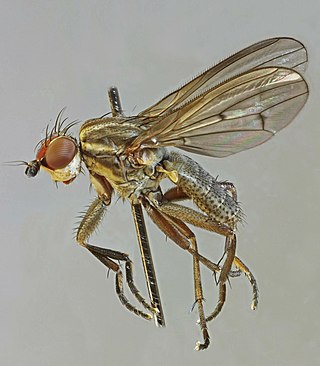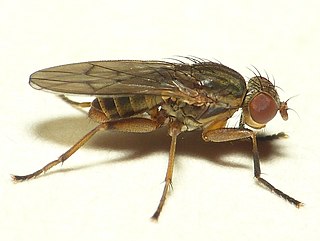
Nana Saheb Peshwa II, born as Dhondu Pant, was an Indian Peshwa of the Maratha empire, aristocrat and fighter, who led the rebellion in Cawnpore (Kanpur) during the 1857 rebellion against the East India Company. As the adopted son of the exiled Maratha Peshwa Baji Rao II, Nana Saheb believed that he was entitled to a pension from the Company, but as he was denied recognition under Lord Dalhousie's doctrine of lapse, He initiated a rebellion. He forced the British garrison in Kanpur to surrender, then murdered the survivors, gaining control of the city for a few days. After a British force recaptured Kanpur, he fled to Nepal, where he died in September 1859 during a tiger hunt.

The siege of Cawnpore was a key episode in the Indian rebellion of 1857. The besieged East India Company forces and civilians in Cawnpore were duped into a false assurance of a safe passage to Allahabad by the rebel forces under Nana Sahib. Their evacuation from Cawnpore thus turned into a massacre, and most of the men were killed and women and children taken to a nearby dwelling known as Bibighur. As an East India Company rescue force from Allahabad approached Cawnpore, 120 British women and children captured by the rebels were butchered in what came to be known as the Bibighar Massacre, their remains then thrown down a nearby well. Following the recapture of Cawnpore and the discovery of the massacre, the angry Company forces engaged in widespread retaliation against captured rebel soldiers and local civilians. The murders greatly enraged the British rank-and-file against the Sepoy rebels and inspired the war cry "Remember Cawnpore!".

The Type 92 7.7mm machine gun was developed for aerial use for the Imperial Japanese Navy in 1932. The Type 92 is a light machine gun and not to be confused with the similarly named Type 92 heavy machine gun.

Madhavrao II was the 12th Peshwa of the Maratha Empire in India, from his infancy. He was known as Sawai Madhav Rao or Madhav Rao Narayan. He was the posthumous son of Narayanrao Peshwa, murdered in 1773 on the orders of Raghunathrao. Madhavrao II was considered the legal heir, and was installed as Peshwa by the Treaty of Salbai in 1782 after First Anglo-Maratha War.
Anandibai was a Peshwa Queen and the wife of Raghunathrao, the 11th Peshwa of the Maratha Empire. In August 1773, she successfully plotted the death of her nephew, the 17-year-old Peshwa Narayanrao. Her husband was acting regent at the time and next in line for the throne, at the time of Narayanrao's death.
Baloji Kunjar / Kunjir (17??–1816) was Sardar and Minister of Affairs in service of Peshwa Baji Rao II. He was Peshwa Baji Rao II's favorite. After the death of Peshwa Sawai Madhavrao, there was debates for the position of Peshwa among the Maratha Empire. Balaji Kunjar performed a successful role to convey most friendly declaration and assurance between Baji Rao II and Nana Phadanvis, to appoint Baji Rao II as peshwa of Maratha Empire. Peshwa Baji Rao II and Nana Phadanvis awarded inam (Jagir) to him in 14 villages near Purandhar fort, for his role. He performed successful role in administration of maratha empire and as affairs minister or diplomat (vakil) for Peshwa Baji Rao II. He along with his son Pandoji Kunjar and Narayan, enjoyed the position as Sur-Patil (सर-पाटील) at Pune Punch Mahals during the era of Peshawa Baji Rao II. He along with his family has long enjoyed the privileges of sar-patil of 360 villages and towns in the Subha of Poona.

Pherbellia is a genus of flies in the family Sciomyzidae, the marsh flies or snail-killing flies. They occur throughout the world, except for the Subantarctic region.
The Bhat Peshwa family earlier known as Bhat family is a prominent Indian Chitpavan Brahmin family who dominated India for around 100 years in the late 18th century and early 19th century. Most of the members in this family were the Peshwas in the Peshwa Era of the Maratha Empire, and Peshwa later became their family name. During their regime, most of the Indian subcontinent was under their control. The last Peshwa, Baji Rao II, was defeated by the British East India Company in the Third Anglo-Maratha War in 1818. The territory was annexed to the British East India Company's Bombay Presidency, and he was pensioned.
Pratul Chandra Gupta was an Indian historian, writer and the author of Nana Sahib and the Rising at Cawnpore, a historical account of the siege of Cawnpore. Considered by many as an authority on Maratha history, he translated The Maharashta Purana, an 18th-century Bengali text written by Gangaram into English, Edward C. Dimock, a known Indologist, being his co-translator. One of his books, INA in Military Operation, was commissioned by Jawaharlal Nehru but the book could not be published, reportedly due to political objections. The Last Peshwa and the English Commissioners, 1818-1851 and Shah Alam II and His Court are some of his other notable works. The Government of India awarded him the third highest civilian honour of the Padma Bhushan, in 1975, for his contributions to Literature.

Agromyza nana is a species of fly in the family Agromyzidae. It is found in the Palearctic. Description of imago-Interocular space red. Antennomeres 1 and II red. Peristoma and palps black. Dorsocentral bristles : 1 +3 subequal; acrostics in four rows. Legs black, knees red. Abdomen black with lighter pruinosity than the thorax. Long.:1,75-2,5 mm. The larva mines Trifolium pratense, Melilotus altissima, Medicago.

Pherbellia cinerella is a species of fly in the family Sciomyzidae. It is found in the Palearctic. P. cinerella is a dark and very characteristic Pherbellia and easy to recognise in the field by its long mid-frontal stripe and darkened anterior wing margin. The larva is predatory on a variety of terrestrial and aquatic snails including Helicidae, Galba truncatula, Helix, Helicella, Succinea and Lymnaea.There is little or no host preference. It is found in a wide range of habitats but it is most often found in warm and dry habitats such as coastal dunes and calcareous grassland where it can reach high numbers. It is also encountered in moist vegetation though in lesser numbers. It is a potential biological control agent.

Pherbellia schoenherri is a species of fly in the family Sciomyzidae. It is found in the Palearctic .4-5 mm. long. In schoenherri the grey ocellar plate is extended in a narrow triangle almost to the antenna base. The prescutellar acrostichal bristles are reduced or absent.The costal vein of the patterned wings are equipped with a series of protruding spinules distinct from the bristles. The females lay eggs on the shells of Succineidae including Succinea putris. The resultant larvae consume the animal and pupate within the shell. P. schoenherri is a very common and widespread species with a very long flight period. It flies mainly from April to October, but in most European countries, it occurs all year round and in a very wide variety of both dry and moist habitats.

Pherbellia ventralis is a species of fly in the family Sciomyzidae. It is found in the Palearctic. Pherbellia ventralis is a small sciomyzid. The body is dark grey blue to blue grey contrasting with the yellowish brown abdomen.The mid-frontal stripe is short. The larvae feed on aquatic snails including Stagnicola palustris.

Sapromyza quadripunctata is a species of fly in the family Lauxaniidae. It is found in the Palearctic.

Pherbellia argyra is a species of fly in the family Sciomyzidae. It is found in the Palearctic.

Renocera stroblii is a species of fly in the family Sciomyzidae. It is found in the Palearctic
The Vasu Doorjamb Inscription is an early 1st-century CE Sanskrit inscription in Brahmi script dedicated to the deity Vāsudeva, related to the Vaishnavism tradition of Hinduism. It is also one of the several dedicatory inscriptions from Mathura bearing the name of the Indo-Scythian Northern Satrap ruler Sodasa, which are useful as historic markers for the first half of the 1st century CE.
Pherbellia seticoxa is a species of marsh fly.
Pherbellia tenuipes is a species of marsh fly.
Pherbellia albovaria is a species of marsh fly.












